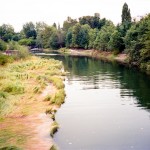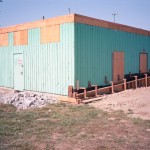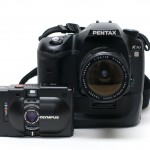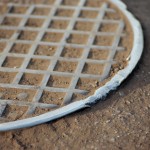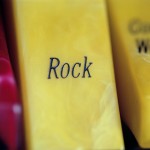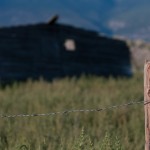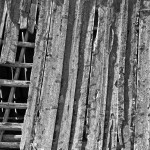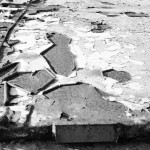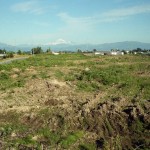Sep
25
2011
While playing with the Pentax Q I allowed myself to mostly forget about the technical and pretend that I don’t know much about photography. Some might argue that would be quite easy, but taking this position allowed me to experience the Q how I think it is intended. Pentax seems to have broken most of the rules that have governed digital photography. The last ten years have seen incremental advancements in technology making each new camera slightly better than the last. With the Q Pentax appears to have said OK things in the world of cameras are pretty good lets start over. What I mean by this is that as people are agonizing over whether to choose a camera with a slightly smaller sensor to get a smaller camera, Pentax has just said forget about the sensor size you want small this is what it takes. Nikon has done a similar thing with their new 1 system cameras the j1 and v1 and used a sensor much smaller that APSC but which is still 4 times the surface area of the Q’s sensor (116mm vs 28.5mm). The Internet is rife with information and arguments about how sensor size affects high ISO low light performance so I won’t bother with that but just present where the current state of the art appears to be, all be it in a very tiny camera.
So here are some examples of the high ISO performance with details, I haven’t applied any luminance noise reduction to the images but have left the color noise reduction of Lightrom at the default 25 for the RAW files. I also haven’t done any distortion correction correction to the RAW images.
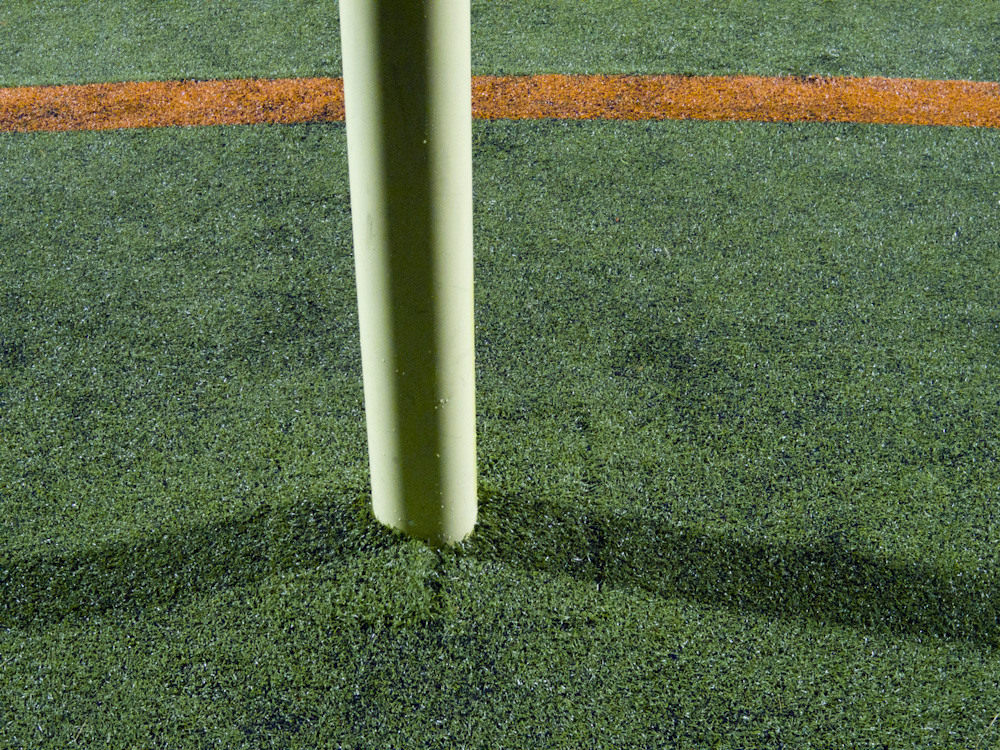
ISO 1600 f3.5, 1/40 sec RAW and a 1 to 1 crop
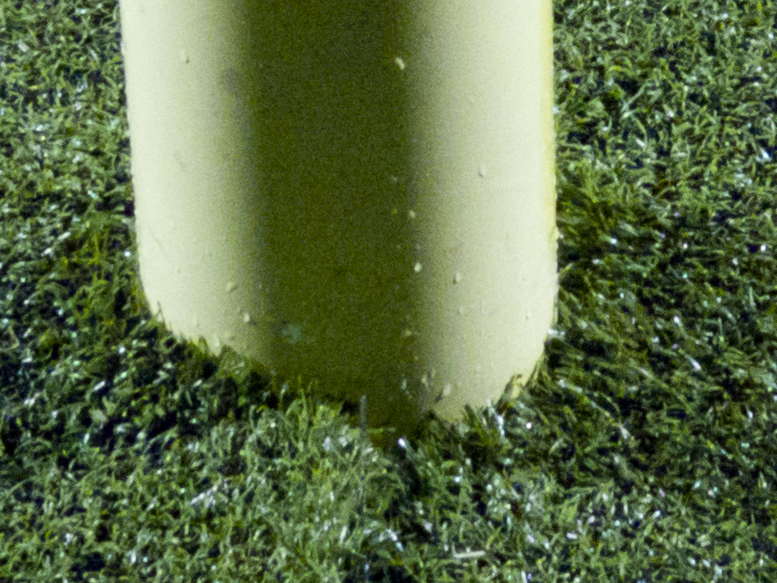
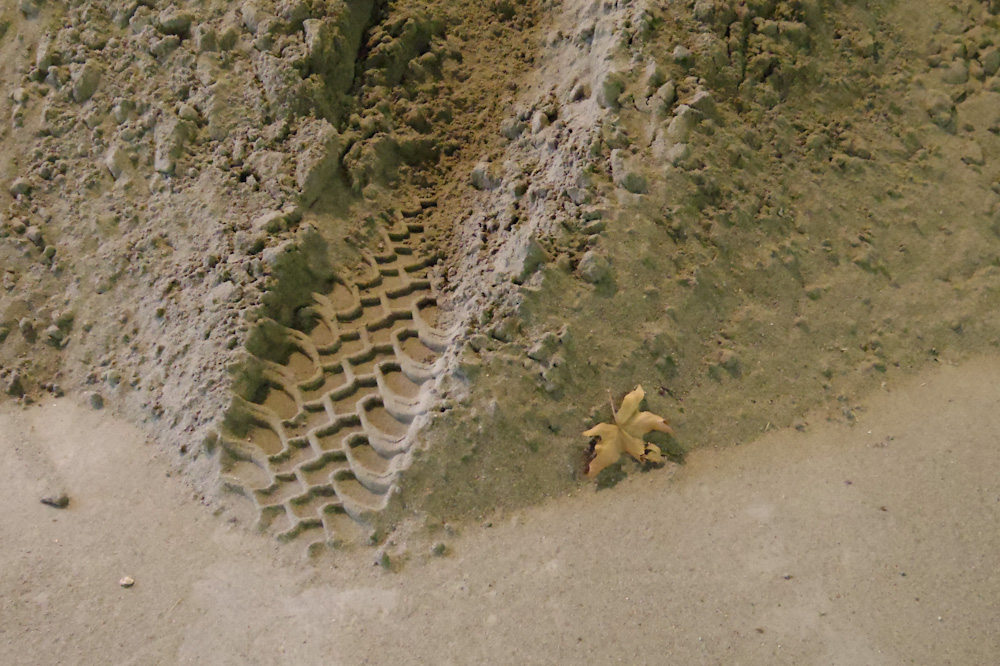
This one was shot as a jpeg with no further processing. ISO 3200 f2.5 1/60 sec, and the 1 to 1 crop follows

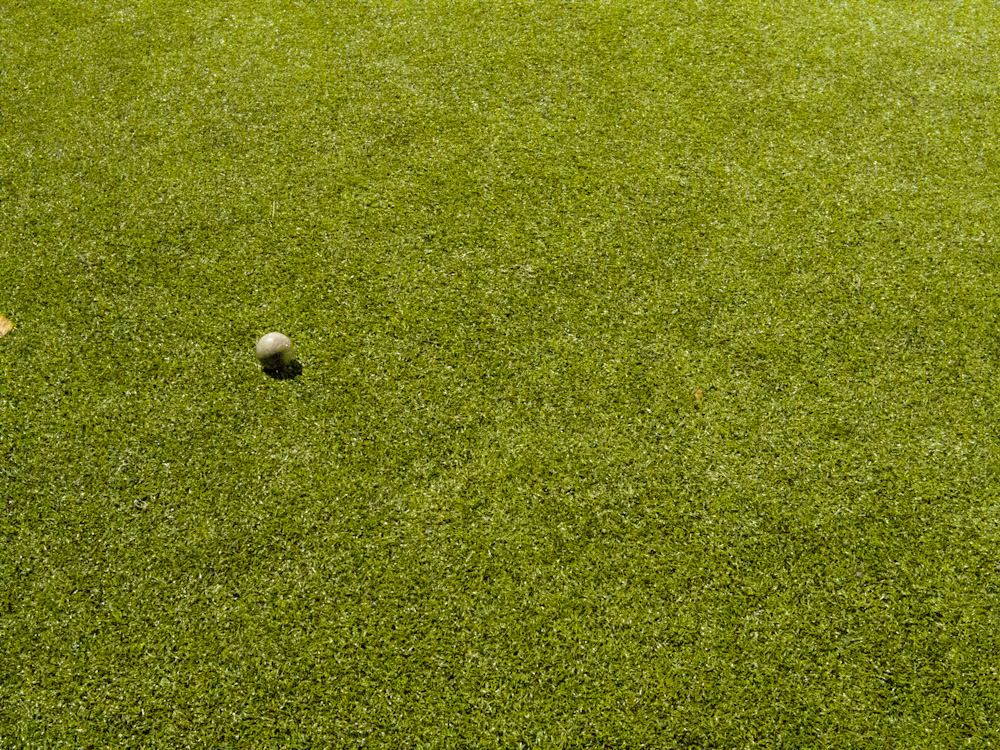
ISO 6400 f4.5 1/60sec RAW again no luminance noise reduction applied and the 1 to 1 crop
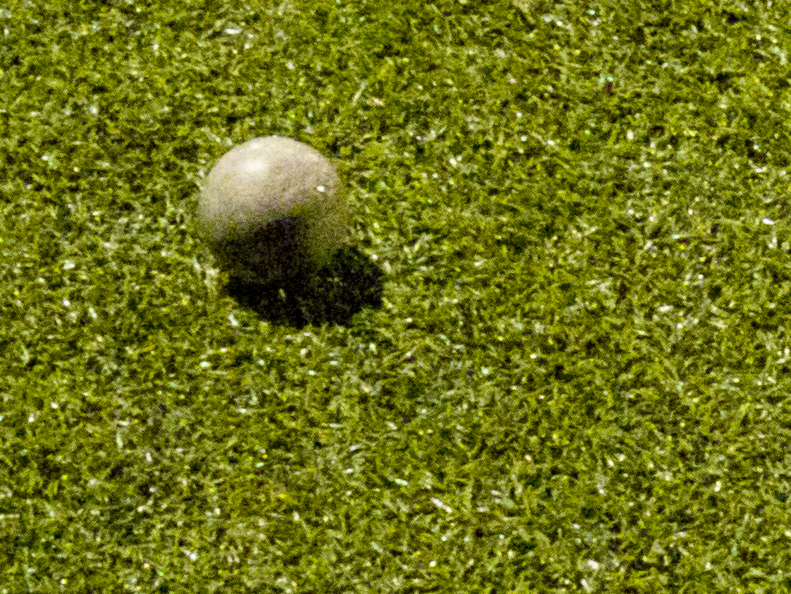
So what are my conclusions from what has to be admitted as a very short 3 hours with the camera. It’s smallness defines it. I don’t think that I was able to show how small it is through pictures which seems odd. You would think you can just put it beside something of a known size and there you are, but it isn’t quite that simple. It changes the measuring stick of small. I’m not entirely sure how to define this camera because there is a trade off with the size and I think that is in the absolute image quality. Perhaps I’m not able to pretend hard enough to let the tech geek in me forget about the image files and only see the pictures. I’m not sure that the Q will attain main stream acceptance but I’m also not sure that was what Pentax was going for, the build quality of the Q is extremely high and it just looks cool.
1 comment | tags: Cameras, Pentax, Q | posted in Cameras, Photography, Uncategorized
Sep
22
2011
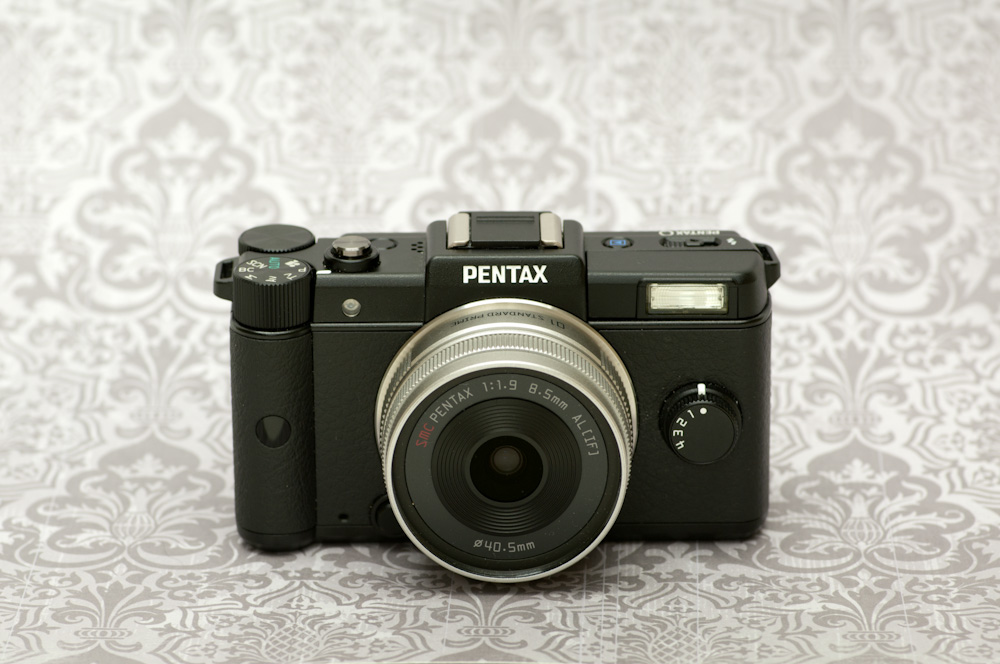
OK it’s small every one understands that, but it is really really small, smaller than I can easily convey. Despite the diminutive size it is easy to use and has direct access to all the necessary controls and quickly becomes just a really tiny image making machine. Walking around with it I could quickly compose shots on the rear LCD and it was quick to lock focus in all but the most challenging conditions, ones where I think any focus system of this type struggles and even phase detect systems of DSLR’s slow down.
I shot mostly in Program mode and used the rear dial to change the aperture while letting the camera choose the shutter speed, effectively using it as aperture priority/program hybrid. The ISO has a direct button and once selected can be changed with the rear dial without the need to hold down any other buttons. This menu selection stickiness is a welcome change from having to press the ISO button of my DSLR while changing with the dial. It’s necessary because there really isn’t enough room on the camera to have more than one finger poking something at any one time. That said all the variables that you would want to change are easily done with one hand. As for the ergonomics of holding the camera, it is quite good, the front grip area has space for a finger which really gives a solid hold with your thumb on the back. The buttons have a very nice high quality feel as does the entire camera.
I didn’t really have a good opportunity to shoot any moving subjects so I can’t really say how it performs under those conditions. My impressions of the JPEGS out of the camera are that they are free of objectionable noise bellow 1600 ISO but above that you begin to see smearing of detail. Leaving the technical aside it performs well and is unobtrusive, freeing you to make pictures. I suppose the question you are left with is whether the trade off of size and fun is worth what is in my opinion a slightly lower image quality than what can be gotten with larger interchangeable lens cameras. I find myself to be between the two camps. I absolutely love the build and size of the Q but I find I’m, possibly unfairly, comparing it to what I can do with my DSLR. I certainly wouldn’t have felt comfortable moving around in the places I did today with a large camera and lens.
I have to admit not reading the manual because of the limited time I had and therefore I didn’t make as many changes as I might have otherwise. One thing I find unfortunate is that it can not be used to wirelessly control external flashes, perhaps this is as much for the fact that the curent flashes dwarf the camera, although they can be mounted and used on the hot shoe. In my next post I will have some sample images after I sort through what I took today.

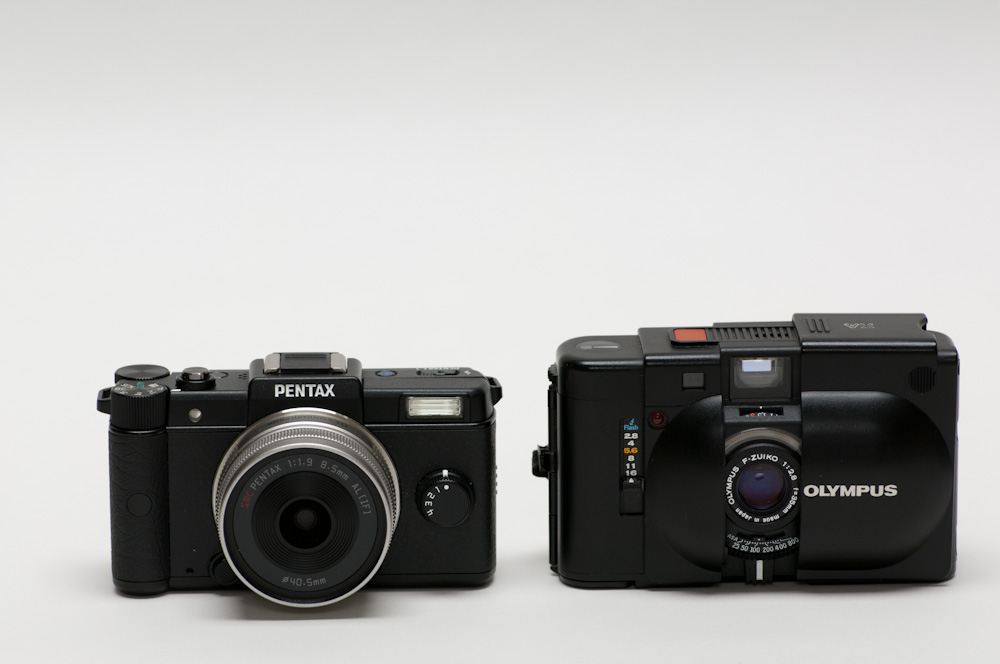
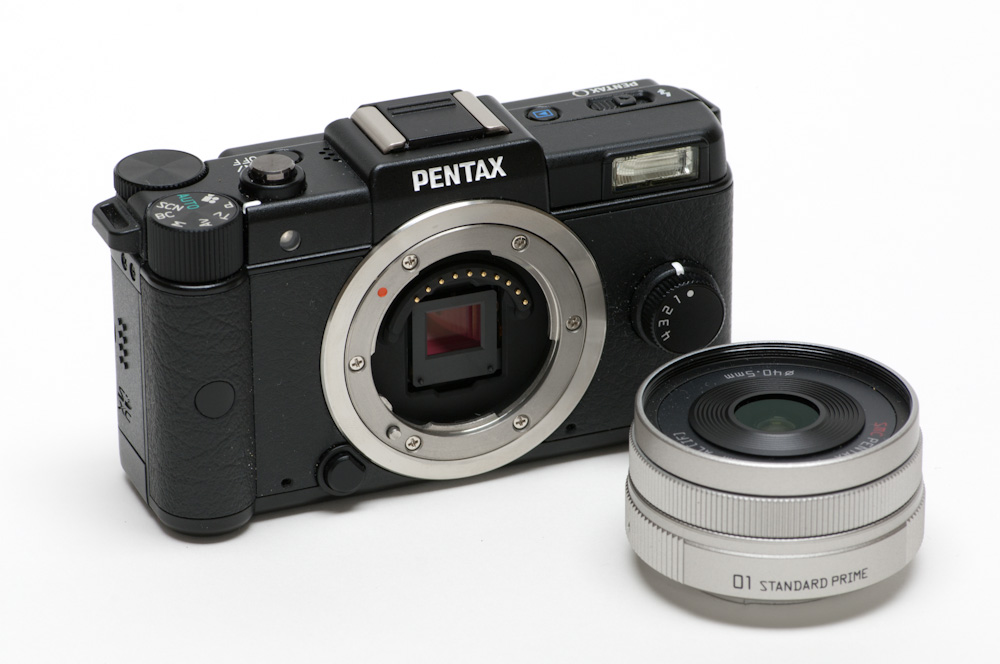
3 comments | tags: Cameras, Pentax, Q | posted in Cameras, Photography
Sep
22
2011
Small is beautiful as far as I’m concerned when it comes to cameras. Here are some frames from my Olympus XA which is the smallest true rangefinder that I own. I wish that I could design my own camera free of any concerns about money or infinging on copyright or purhaps the laws of physics. It would end up being pretty small and not necesarily have a lot of features beyond easy controls, something like a digital Olympus XA maybe?
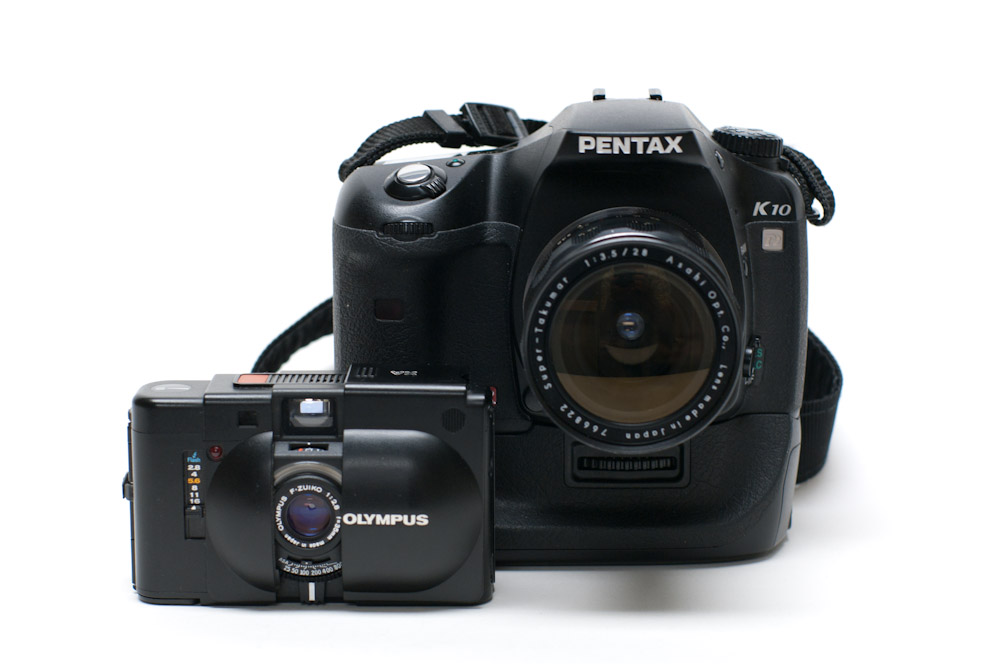
Here is the XA nestled next to the Pentax K10D with grip, which wouldn’t be confused for a small camera, unless you were a gaint.
no comments | tags: film, olympus, Xa | posted in Cameras, Photography
Sep
18
2011
This is my second generation of smart phone and I am enjoying using it every bit as much as any of my other cameras. The ultimate image quality isn’t at the same level as a dedicated digital camera but it satisfies my need to create images. The HTC Evo 3D has one single feature that makes it very photo friendly and that is a dedicated shutter button. It means that when you get a composition you like you can just press the button rather than taking one hand to touch the screen and in the process cause shake and disturb the framing.
2 comments | tags: camera, cell phone | posted in Cameras, Photography
Sep
9
2011

I was graciously given this lens, a Vivitar 35mm in m42 mount. It might be one of those things where someone can’t quite bring themselves to throw it out so they go “Hey I know give it to Wallace, he’ll use anything” Thank you for understanding me. It would appear that if this lens has any coatings they are minimal and non effective and that’s the “feature” I decided to exploit. I’ve actually been looking for a lens that will flare this badly for a while without much luck. Modern lens makers go to great lengths depositing rare elements using complex processes to improve the performance of lens elements by reducing internal reflections. The result is that with a modern multi coated lens very little flare occurs even with a very bright light source in the field of view, this lens is the opposite of that. So why would I want a lens that does something people work so hard to eliminate? It’s just a fun way of evoking a nostalgic look.
This image may be the glint that stared it for me some 23 years ago. (Kodachrome 64 shot with a Minolta X-370, lens unknown, well I just don’t remember.)
5 comments | tags: Flare, lens, Photography | posted in Cameras, Photography
Sep
4
2011
Fuji has released yet another camera that has peaked my interest, the Fuji X10. It is a small fixed zoom lens camera (28-112mm equivalent) with a maximum aperture of F2.0 at the wide end and F2.8 at the telephoto end. All this information is readily available elsewhere so that’s not really what I want to post about. One of the new features of the X10 apparently is that manual focus is performed in the form of the sub command dial. This may seem new and innovative but it is actually something Fuji has done before. The Fujica 35SE used a thumb wheel back in 1959 in combination with a coupled rangefinder. In this form I can say it works very well, the only problem for me being that that same location changes my aperture on my DSLR and it takes me a moment to get that through my skull. How well the modern implementation works remains to be seen especially without the rangefinder patch. When I first started writing this post most of the scant info about manual focus mentioned the main command wheel for focusing but after reading more info from Fuji itself it seems that it is the sub command dial which will not be as easily done with a thumb or even one handed.

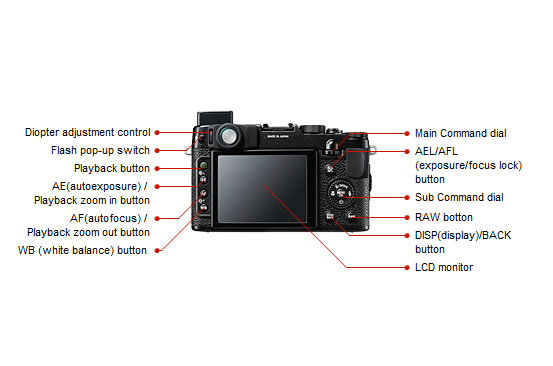
1 comment | tags: Cameras, Fuji, Fujica, x10 | posted in Cameras, Uncategorized
Aug
24
2011
This is a great lens for either film or digital, as might be expected for a macro lens, it is incredibly sharp and contrasty. Here I’ve used it with the PZ1p and Ektar 100.
2 comments | tags: film, macro, Pentax, PZ1p | posted in Cameras, Photography
Aug
23
2011
Just some miscellaneous images I took on my recent trip.
2 comments | tags: Pentax. photography, Photography | posted in Cameras, Photography
Aug
18
2011
These two images represent some of the struggle I’m having in getting digital files to have a pseudo film look. There is more to it than grain and shallow depth of field. The way that colours are rendered particularly in the shadows differs. The biggest difficulty though is that when you get it right for one image it can’t be directly applied to another. I will keep trying and keep shooting film too, not that I would stop even if I got it perfect.
Here is film (Ektar 100)

And here is digital. I have obviously stopped the aperture down further in addition to the different relative sensor size on the digital image giving a greater range of things that are acceptably in focus but that aside the difference is still apparent despite my efforts.

no comments | tags: Digital, film | posted in Cameras, Photography
Aug
15
2011
That’s some serious flare in the back lit picture, you can’t get that from a modern lens. Yes I’m actually pleased about that, it may not be something you want in your everyday photography but if you need that look for a reason this would be the way to get it.
no comments | tags: camera, film, Ricoh | posted in Cameras, Photography

















